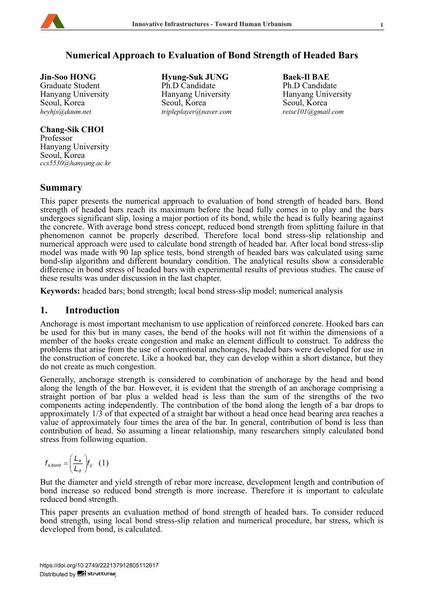Numerical Approach to Evaluation of Bond Strength of Headed Bars

|
|
|||||||||||
Bibliographic Details
| Author(s): |
Jin-Soo Hong
Hyung-Suk Jung Baek-Il Bae Chang-Sik Choi |
||||
|---|---|---|---|---|---|
| Medium: | conference paper | ||||
| Language(s): | English | ||||
| Conference: | 18th IABSE Congress: Innovative Infrastructures – Towards Human Urbanism, Seoul, Korea, 19-21 September 2012 | ||||
| Published in: | IABSE Congress Seoul 2012 | ||||
|
|||||
| Page(s): | 1958-1964 | ||||
| Total no. of pages: | 7 | ||||
| DOI: | 10.2749/222137912805112617 | ||||
| Abstract: |
This paper presents the numerical approach to evaluation of bond strength of headed bars. Bond strength of headed bars reach its maximum before the head fully comes in to play and the bars undergoes significant slip, losing a major portion of its bond, while the head is fully bearing against the concrete. With average bond stress concept, reduced bond strength from splitting failure in that phenomenon cannot be properly described. Therefore local bond stress-slip relationship and numerical approach were used to calculate bond strength of headed bar. After local bond stress-slip model was made with 90 lap splice tests, bond strength of headed bars was calculated using same bond-slip algorithm and different boundary condition. The analytical results show a considerable difference in bond stress of headed bars with experimental results of previous studies. The cause of these results was under discussion in the last chapter. |
||||
| Keywords: |
numerical analysis bond strength headed bars local bond stress-slip model
|
||||
